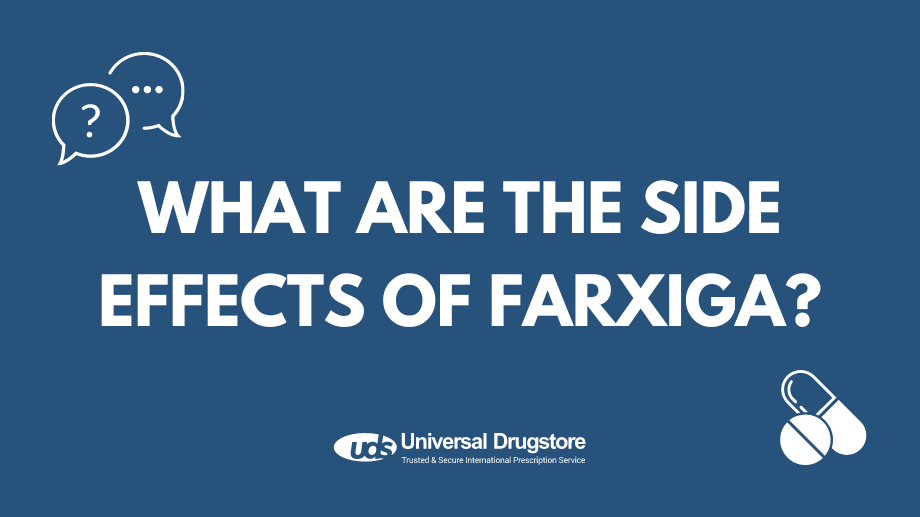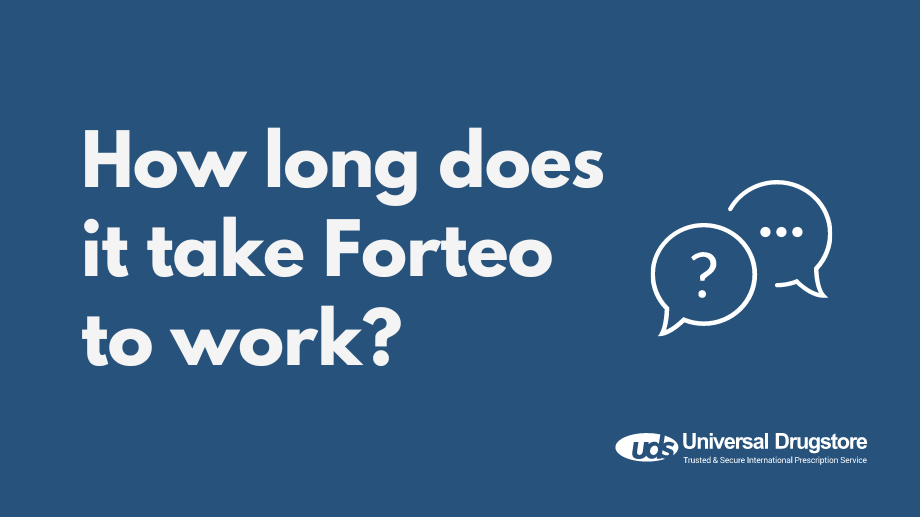Farxiga (dapagliflozin) is an oral diabetes medication manufactured by AstraZeneca that is also FDA-approved to help treat heart failure and chronic kidney disease (CKD). It belongs to the drug class called sodium-glucose co-transporter 2 (SGLT-2) inhibitors. SGLT-2 inhibitors are sometimes referred to as gliflozins because of the common ending in their generic names.
Farxiga is generally well tolerated and has side effects similar to other gliflozins, like Invokana (canagliflozin) and Jardiance (empagliflozin). Some of the most common side effects include vaginal yeast infection, common cold symptoms, and urinary tract infections (UTIs). It can also rarely cause serious side effects such as high levels of ketones in your blood, low blood sugar levels, and severe infections. Keep reading as we go into more detail about what side effects may occur with Farxiga and other important information you should know.
What are the most common side effects of Farxiga?
The most common side effects of Farxiga seen in clinical trials include:
-
Vaginal yeast infections
-
Common cold symptoms
-
Urinary tract infections (UTIs)
Other side effects of Farixga include:
-
Back pain
-
Increased urination
-
Increased cholesterol or fats in your blood
-
Male genital yeast infections
-
Flu-like symptoms
-
Nausea
-
Pain in your hands or feet
-
Constipation
-
Weight loss
What are the serious side effects of Farxiga?
Rarely, Farxiga may cause serious side effects such as:
-
Serious allergic reactions including life-threatening anaphylaxis. Symptoms of anaphylaxis include raised red patches on your skin (hives), swelling of your face, lips, tongue, or throat, and trouble breathing. Seek immediate medical attention if you experience any symptoms of a serious allergic reaction.
-
Low blood sugar (hypoglycemia), especially if taken with a sulfonylurea like Glucotrol (glipizide). Symptoms of low blood sugar include sweating, shaking, fast heartbeat, hunger, dizziness, irritability, and headache.
-
Kidney problems, including volume depletion and dehydration. Symptoms of dehydration/low blood volume include urinating less than usual, dry mouth, increased thirst, fast heartbeat, dizziness, lightheadedness, or fainting. The risk of dehydration is increased if you are taking a diuretic, have kidney disease, are aged 65 or older, or are eating a low-salt diet.
-
Serious urinary tract infections, including urosepsis and pyelonephritis that may require hospitalization, have occurred. Notify your doctor if you have symptoms of a UTI such as blood in your urine, increased urination, burning during urination, or pain in your lower stomach. You may also have back pain, fever, nausea, or vomiting.
-
Fournier’s gangrene (necrotizing fasciitis of the perineum). This is a serious bacterial infection in the genital/anal area that requires immediate medical attention, including medication, surgery, or hospitalization.
These are not all of the possible side effects of Farxiga. You should always seek medical advice from a healthcare professional for any questions or concerns about your medical condition or treatment. You should also read all the patient information, including your Medication Guide that comes with Farxiga. You can report side effects to FDA at 1-800-FDA-1088 or www.fda.gov/medwatch.
Farxiga FAQs
What does Farxiga treat?
Farxiga is a brand-name SGLT-2 inhibitor approved by the FDA to:
-
Reduce your chance of hospitalization and cardiovascular death from heart failure if you are an adult that has heart failure.
-
Reduce your chance of hospitalization from heart failure if you are an adult with type 2 diabetes mellitus (T2DM) and known heart disease or with more than 1 cardiovascular risk factor.
-
Lower your risk of worsening kidney disease, end-stage kidney disease, hospitalization, and cardiovascular death from heart failure if you are an adult with chronic kidney disease (CKD).
-
Manage blood sugar levels along with a healthy diet and regular exercise in adults with T2DM.
Farxiga is not approved to treat type 1 diabetes (T1DM) as it can increase your risk of a serious condition called diabetic ketoacidosis (increased levels of ketones in your urine or blood). It should also not be used if you have severe kidney disease or are on dialysis.
What does Farxiga do to the body?
Dapagliflozin, the active ingredient in Farxiga, is an SGLT-2 inhibitor. It works by blocking sugar and sodium from being reabsorbed by your kidneys. This helps lower your blood sugar levels by increasing the amount of sugar excreted out through your urine. This may also help improve your heart's ability to pump blood to the body. Farxiga also lowers the increased kidney pressure that is seen in people with chronic kidney disease.
What should you tell your healthcare provider before taking Farxiga?
You should not take this medication if you have an allergy to dapagliflozin or to any of the inactive ingredients in this medication. You should also avoid Farxiga if you have severe kidney impairment or are on dialysis.
You should be sure your healthcare provider is aware of all your medical conditions as you may need increased monitoring during treatment. This includes:
-
Type 1 diabetes (T1DM) or diabetic ketoacidosis
-
Heart disease
-
Hypotension (low blood pressure)
-
Kidney problems or decreased kidney function
-
Liver disease
-
Scheduled surgery
-
History of pancreatitis (inflammation of your pancreas)
-
Are eating less than normal or a low-salt diet
-
Are a heavy drinker or you binge drink
-
History of urinary tract infections or problems urinating
-
Are pregnant or plan on becoming pregnant as Farxiga may cause harm to your fetus
-
Are breastfeeding or plan on breastfeeding, as it’s not known if this medication is found in breast milk and it is not recommended for use during lactation
What drug interactions are there with Farxiga?
When Farxiga is taken with other prescription drugs, over-the-counter medications, vitamins, and supplements, it may change how they work or increase the risk of side effects. Some drug interactions with Farxiga may include urine glucose tests and 1,5-AG assays.
What should you do if you miss a dose of Farxiga?
If you miss a dose of Farxiga, take it immediately after you remember. However, if it’s almost time for the next dose, skip the missed dose. You can then take your next dose at the next scheduled time. Don’t take an extra dose of Farxiga to make up for a missed dose.
How long does it take Farxiga to work?
Farxiga will start working right after you take the first dose. However, it might take a full week for you to see the full effect on your blood sugar levels. It is not known how long it takes for Farxiga to help lower the risk of severe complications from CKD or heart failure.
How should you store Farxiga?
Farxiga should be stored at room temperature between 68°F and 77°F (20°C and 25°C).
Related medications
Sources
-
Farxiga: https://www.farxiga.com/side-effects
-
Farxiga FAQs: https://www.farxiga.com/faq/
-
FDA Package Insert: https://www.accessdata.fda.gov/drugsatfda_docs/label/2020/202293s020lbl.pdf
-
Medscape: https://reference.medscape.com/drug/farxiga-dapagliflozin-999899#0
-
Prescriber’s Digital Reference: https://pdr.net/drug-summary/Farxiga-dapagliflozin-3427









